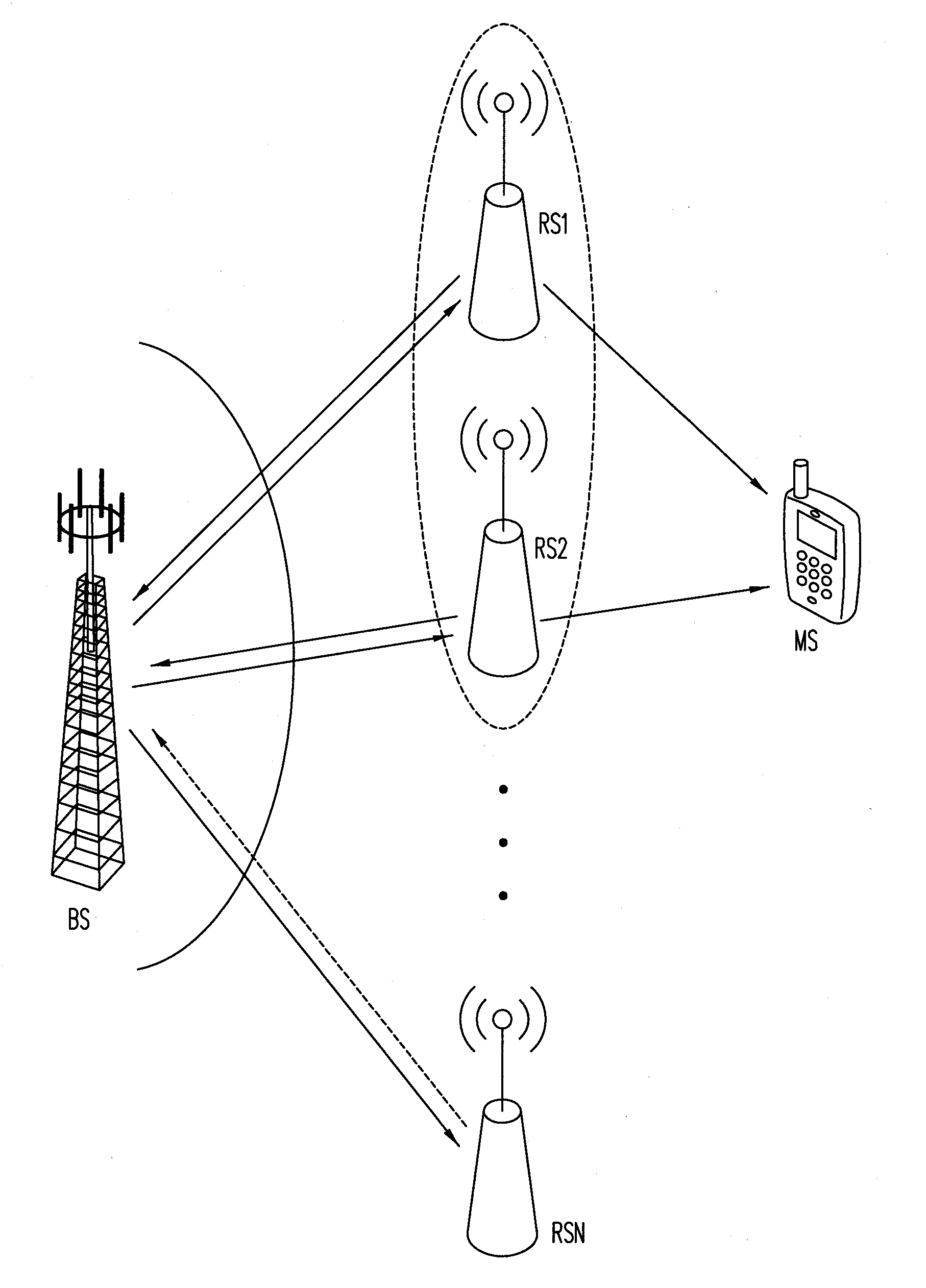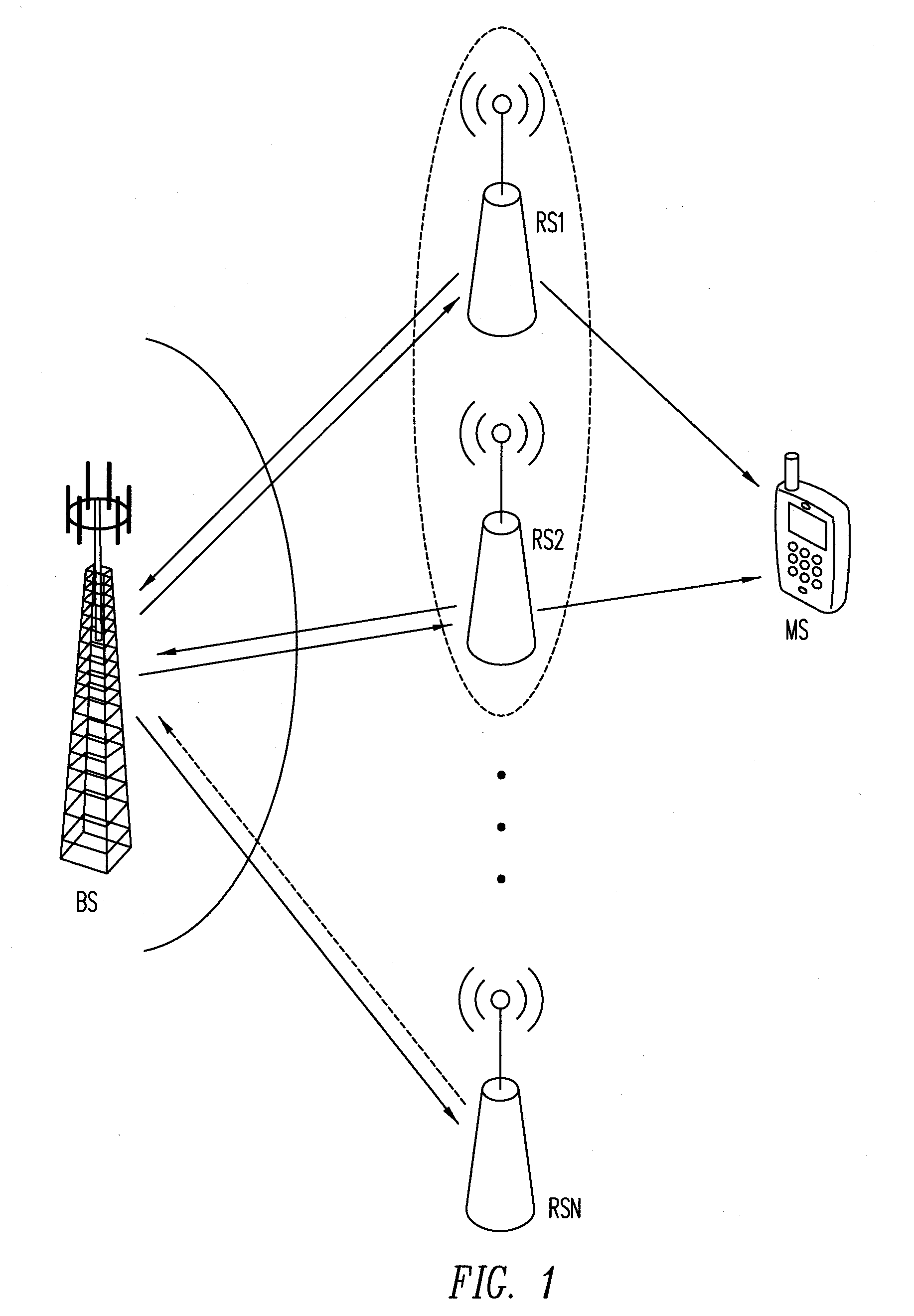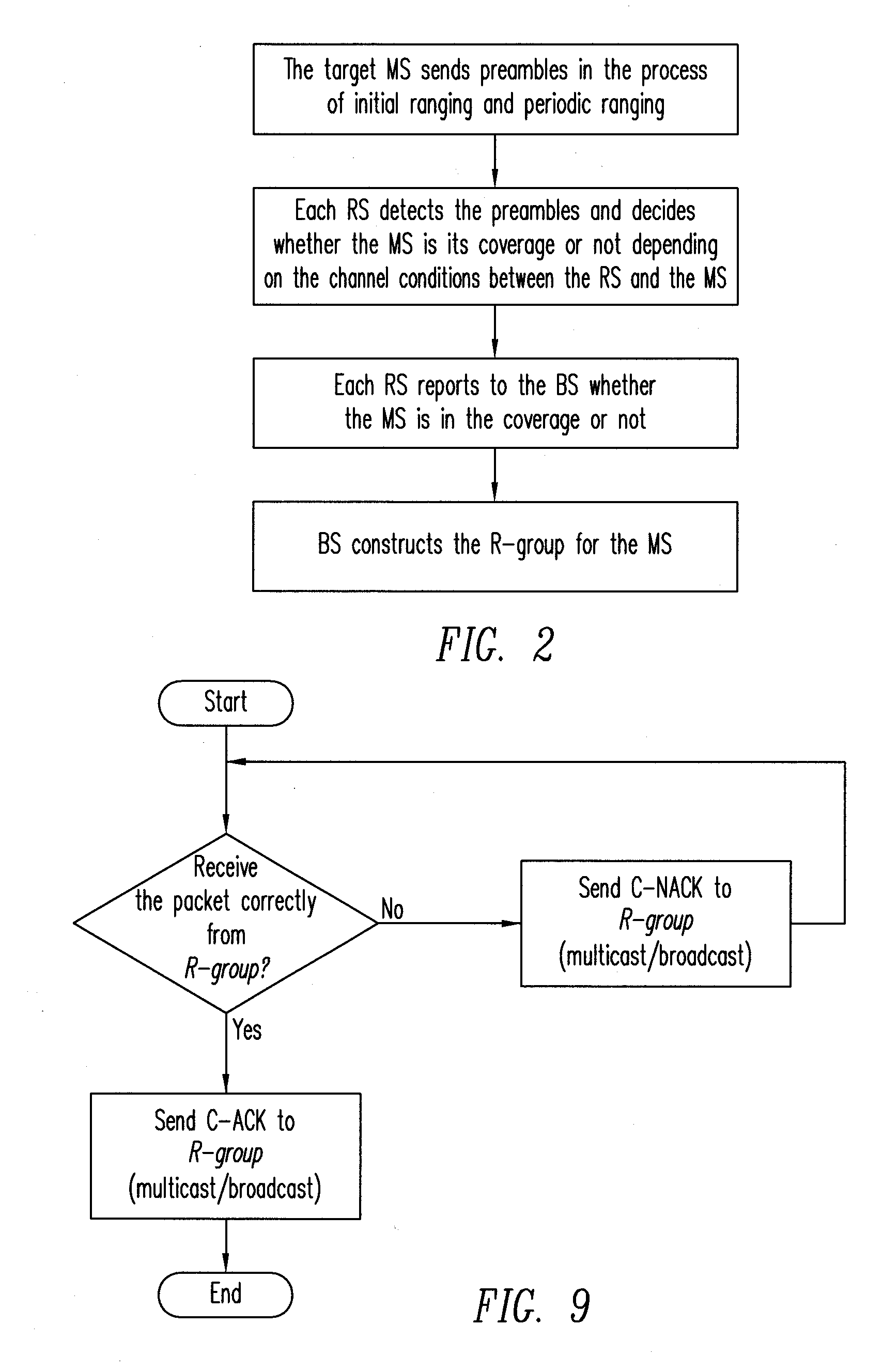Method and System for a Reliable Relay-Associated and Opportunistic Cooperative Transmission Schemes
a cooperative transmission and relay technology, applied in the field of wireless communication, can solve the problems of inability to clearly show how the protocols may be implemented, inability to address laneman ii, and inability to reliably receive data at the rss, so as to reduce the workload of the bs and the latency of the packets, and improve the cooperative diversity
- Summary
- Abstract
- Description
- Claims
- Application Information
AI Technical Summary
Benefits of technology
Problems solved by technology
Method used
Image
Examples
Embodiment Construction
[0044]FIG. 1 shows communication between a BS and an MS with a group of RSs, in accordance with one embodiment of the present invention. In a direct communication between a BS and an MS without relaying, the BS transmits symbols to the MS within a pre-defined frame structure that is specified by the wireless access system. Often, however, due to multipath propagation effects (e.g., path loss, fading, and shadowing) and the limited range of the BS, a direct transmission between BS and MS may not be possible. One possible solution uses relay elements (i.e., RSs) between BS and MS. FIG. 1 shows a group of RSs whose membership is decided, for example, during an initial ranging or a periodical ranging process. Usually, the RSs are included in the group when their respective channel condition metrics to the target MS exceed a pre-defined threshold value. This group of RSs (i.e., RS1, RS2, . . . , RSN) is referred to as a “relay-associated group” (“R-group”) for the target MS. Conversely, ...
PUM
 Login to View More
Login to View More Abstract
Description
Claims
Application Information
 Login to View More
Login to View More - R&D
- Intellectual Property
- Life Sciences
- Materials
- Tech Scout
- Unparalleled Data Quality
- Higher Quality Content
- 60% Fewer Hallucinations
Browse by: Latest US Patents, China's latest patents, Technical Efficacy Thesaurus, Application Domain, Technology Topic, Popular Technical Reports.
© 2025 PatSnap. All rights reserved.Legal|Privacy policy|Modern Slavery Act Transparency Statement|Sitemap|About US| Contact US: help@patsnap.com



